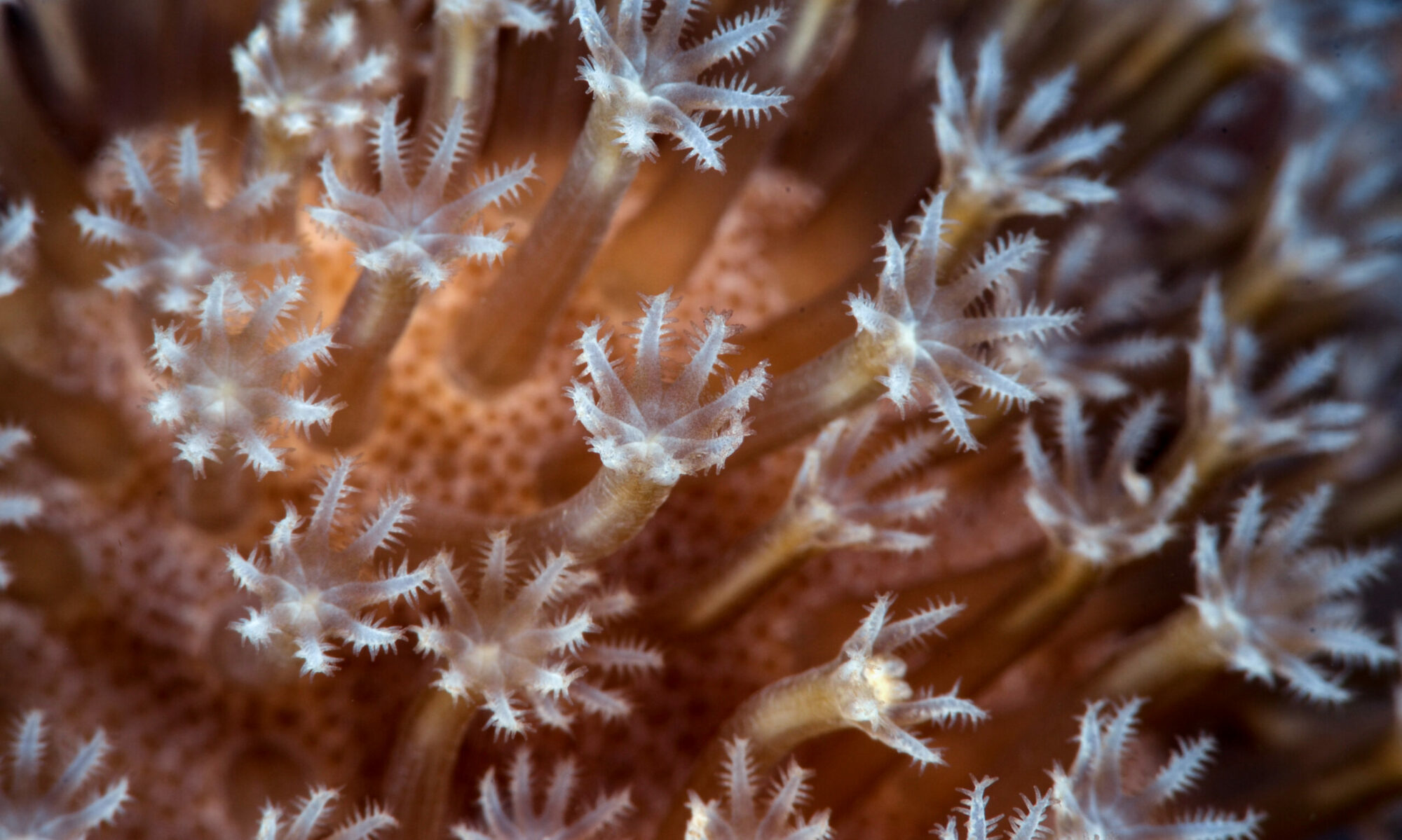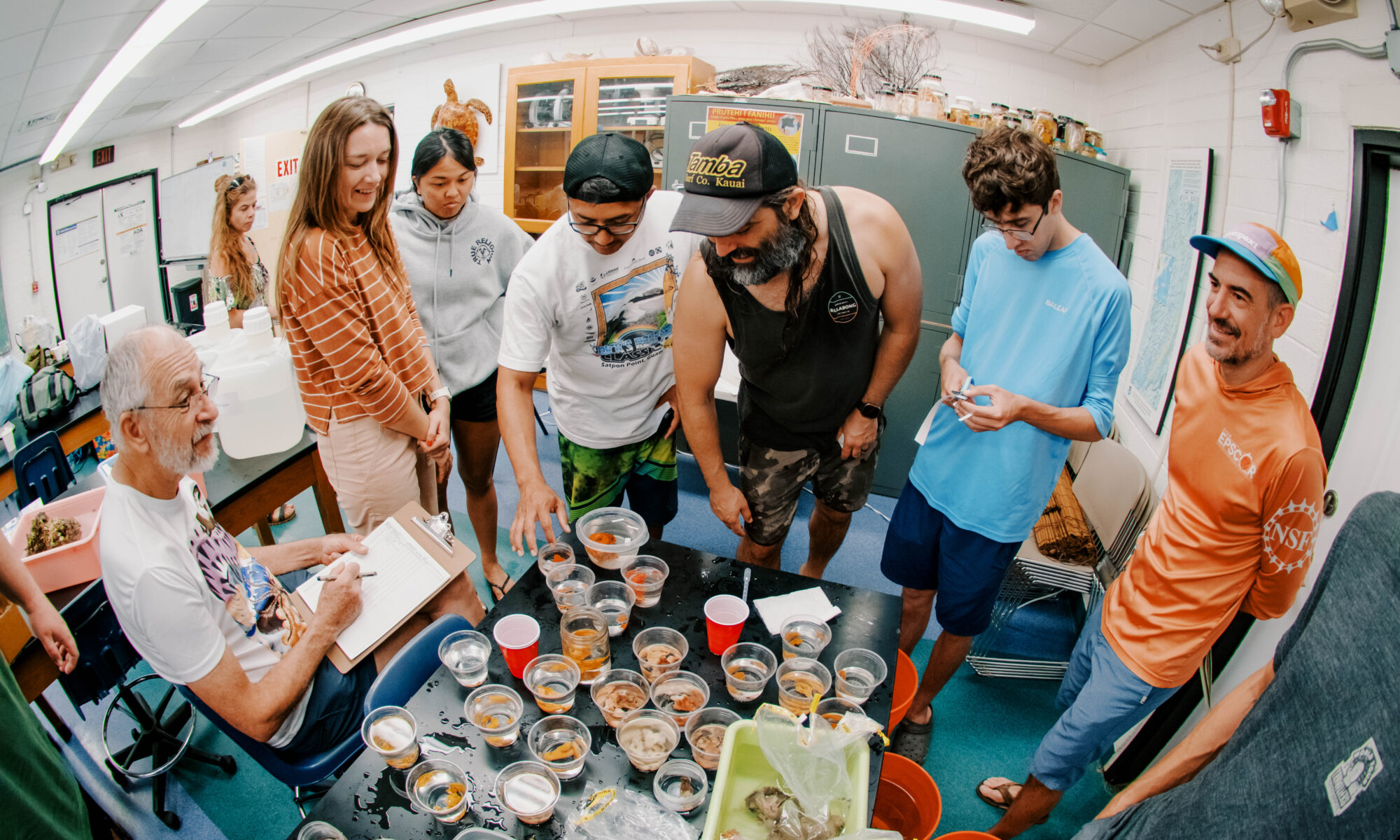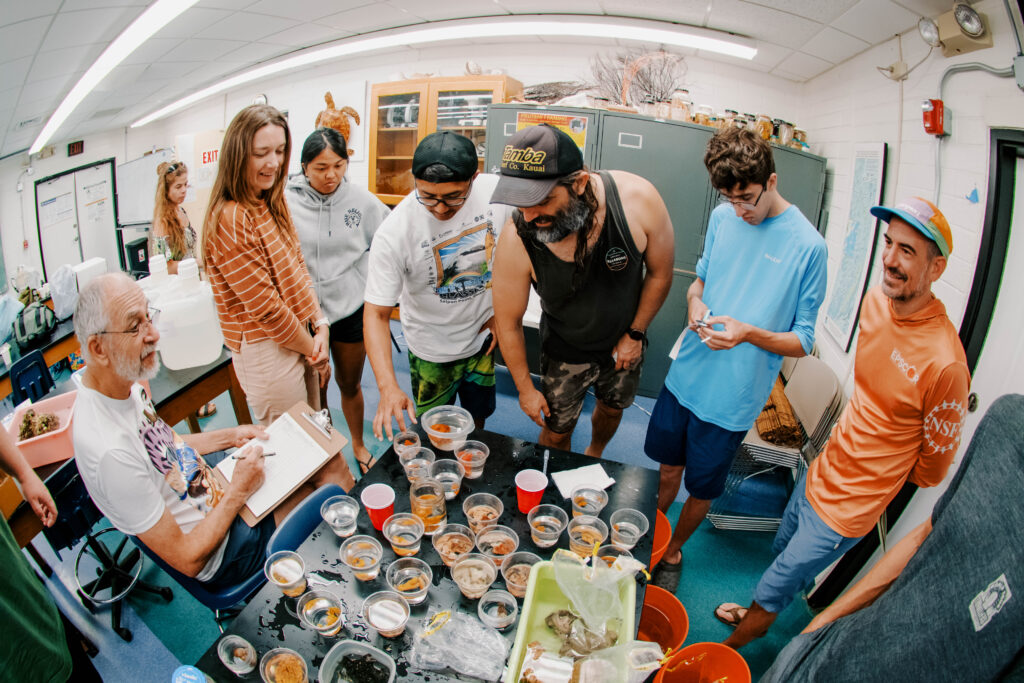
The University of Guam Marine Laboratory and Guam NSF EPSCoR Biorepository conducted a two-day workshop focused on Porifera—commonly known as sea sponges—bringing together researchers, students and marine professionals for hands-on learning and fieldwork.
Held on May 29 and 30, and conducted in partnership with the Naval Facilities Engineering Systems Command (NAVFAC), the workshop detailed the diversity of Porifera species in Guam’s waters, specifically in Apra Harbor. Participants learned basic taxonomy methods used by sponge biologists and also took part in an off-site specimen collection session.
The workshop’s main presentation was delivered by Jan Vicente, Ph.D., a researcher at the University of Hawaiʻi Manoa’s ToBo Lab, and Gustav Paulay, Ph.D., professor of biology at the University of Florida. Having researched sponges in Hawaiʻi for a decade, Vicente discovered similarities between sponge species found in Guam harbors and that of those in Hawaiʻi.
“It’s kind of crucial to have taxonomy workshops at local scales so that we can standardize the methods that we use in different places,” Vicente explains.
Following the presentation, participants of the workshop learned common sponge identification practices using in-person samples. “Some had never seen a sponge before and they went from never seeing a sponge before to identifying different spicule types, to carrying field descriptions as best as possible,” said Vicente.
Spicules are structural elements of a sponge made from calcium carbonate or silica that serve as their skeleton and are major factors in differentiating sponge species.
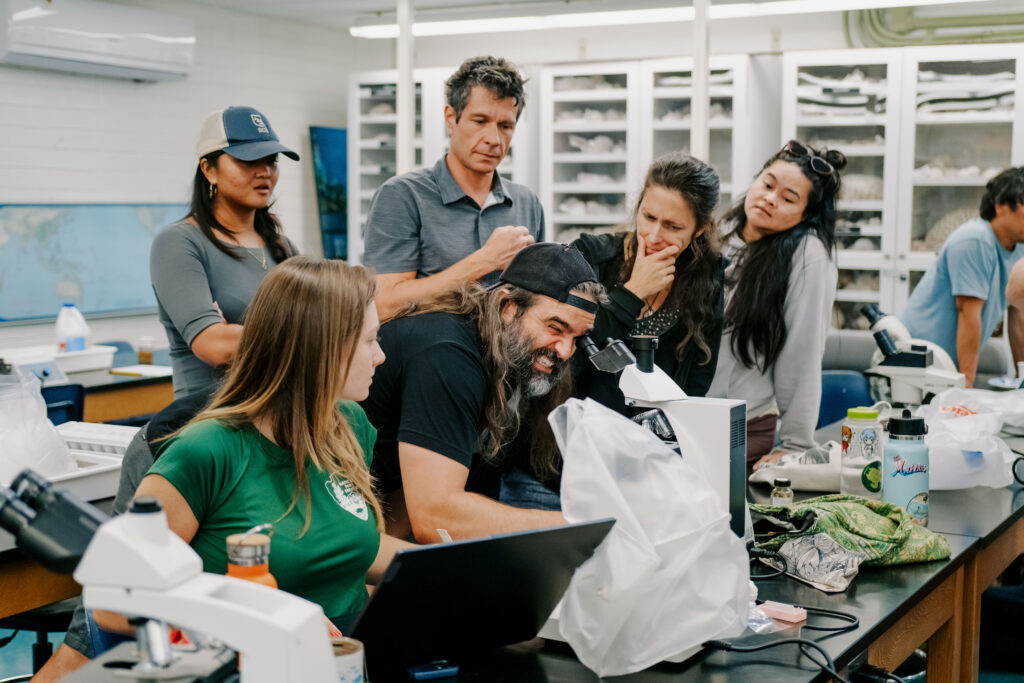
The workshop went outdoors for its second day as the researchers and participants conducted a sponge specimen collection session. The group convened at Outhouse Beach, a popular scuba-diving spot in close vicinity to Apra Harbor, and spent the morning collecting numerous specimens for identification and categorization back at the UOG Marine Lab. Once they returned to campus, the rest of the afternoon was used for identifying, photographing, and labeling these specimens before they head to storage in the Biorepository.
During a NOAA cruise to Guam in 2017, Vicente collected fresh porifera specimens to use in DNA comparisons against specimens found in Hawaiʻi. These comparisons confirmed to him that the same species of Porifera can be found both in Guam and Hawaiʻi. Through this discovery, Paulay connected Vicente with Robert Lasley, Ph.D., assistant professor and curator of crustacea at the UOG Biorepository, and the group concluded that a sponge workshop held on Guam would be significantly beneficial.
“It was a great opportunity to bring my knowledge from the harbors in Hawaiʻi, because a lot of the species that we find here and the harbors here are found in Hawaiʻi as well, and it’d be interesting to see what are the vectors involved in distributing those species,” Vicente stated.
He also cited the Marine Lab’s access to running seawater and its variety of scientific instruments specializing in studying sponge morphology as reasons to have the workshop here on Guam.
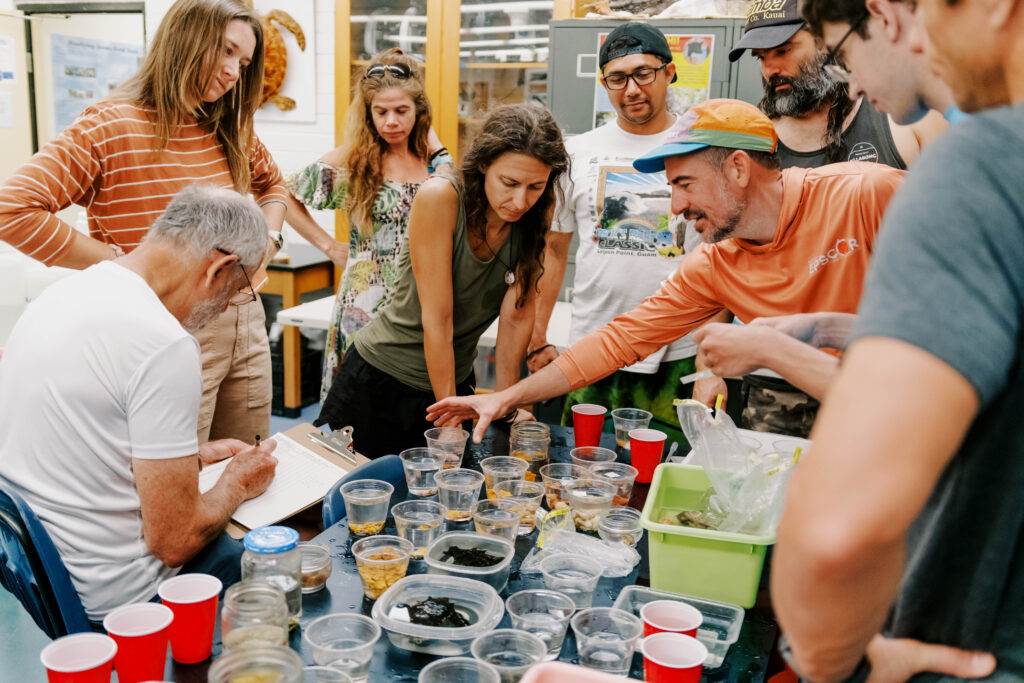
The workshop itself proved to be a success in Vicente’s eyes. Research compounded from years of surveys up until this very workshop has shown the team that local species of Porifera are part of an even bigger species complex originating all the way out from Singapore.
“These specimens that are sitting in museums right now from the ‘90s might be able to yield enough DNA to provide good sequences, but these fresh specimens that have been collected now are going to create even better data because sequencing technology now is amazing,” Vicente said.
Regarding what comes next after the workshop, Vicente hopes that in the next couple of years, there will be a better understanding of the species—providing not only insight into the workshop’s objectives, but also into the evolutionary history of these organisms, what drives them, how they speciate, and how they are connected across the Pacific archipelagos.
On Thursday, May 29 and Friday, May 30, 2025, researchers and students alike gathered at the University of Guam Marine Lab for a Porifera (sea sponge) workshop.
Conducted by the UOG Marine Lab and NAVFAC, the workshop detailed the diversity of porifera species in our local waters, specifically in Apra Harbor. Participants were educated on basic porifera taxonomy methods used by sponge biologists and also took part in an off-site specimen collection session.
The workshop’s main presentation was delivered by Jan Vicente, Ph.D., researcher at the University of Hawaii, Manoa’s ToBo Lab, and Gustav Paulay, Ph.D., professor of Biology at the University of Florida. Having researched sponges in Hawaii for a decade, Vicente discovered similiarities between sponge species found in Guam harbors and that of those in Hawaii. “It’s kind of crucial to have taxonomy workshops at local scales so that we can standardize the methods that we use in different places”, Vicente explains.
Following the presentation, participants of the workshop were taught common sponge identification practices using in-person samples. “Some had never seen a sponge before and they went from never seeing a sponge before to identifying different spicule types, to carrying field descriptions as best as possible”, said Vicente. Spicules are structural elements of a sponge made from calcium carbonate or silica that serve as their skeleton and are major factors in differentiating sponge species.

The workshop went outdoors for its second day as the researchers and participants conducted a sponge specimen collection session. The group convened at Outhouse Beach, a popular scuba-diving spot in close vicinity to Apra Harbor, and spent the morning collecting numerous specimens for identification and categorization back at the UOG Marine Lab. Once they returned to campus, the rest of the afternoon was used for identifying, photographing, and labeling these specimens before they head to storage in the Biorepository.
During a NOAA cruise to Guam in 2017, Vicente collected fresh porifera specimens to use in DNA comparisons against specimens found in Hawaii. These comparisons confirmed to him that the same species of porifera can be found both in Guam and Hawaii. Through this discovery, Paulay connected Vicente with Robert Lasley, Ph.D., Assistant Professor and Curator of Crustacea at the UOG Biorepository, and the group concluded that a sponge workshop held on Guam would be significantly beneficial.
“It was a great opportunity to bring my knowledge from the harbors in Hawaii, because a lot of the species that we find here and the harbors here are found in Hawaii as well, and it’d be interesting to see what are the vectors involved in distributing those species,” Vicente stated. He also cited the Marine Lab’s access to running seawater and its variety of scientific instruments specializing in studying sponge morphology as reasons to have the workshop here on Guam.
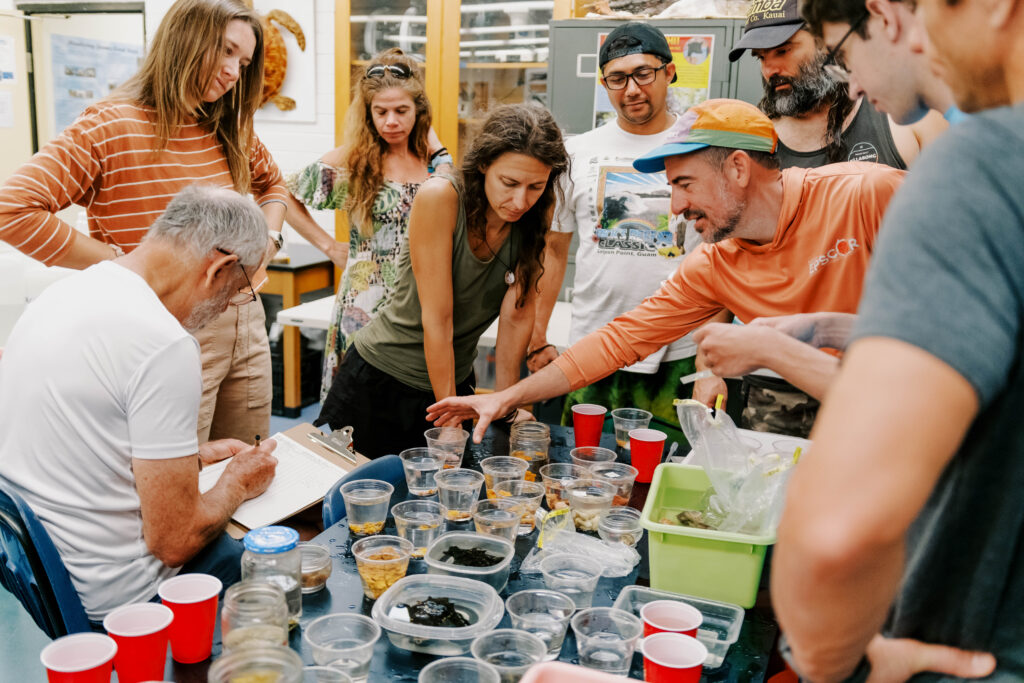
The workshop itself proved to be a success in Vicente’s eyes. Research compounded from years of surveys up until this very workshop has shown the team that local species of porifera are part of an even bigger species complex originating all the way out from Singapore. “These specimens that are sitting in museums right now from the ‘90s might be able to yield enough DNA to provide good sequences, but these fresh specimens that have been collected now are going to create even better data because sequencing technology now is amazing,” Vicente explains.
In regards to what is to follow after the workshop, Vicente hopes that “in the next couple of years, we’ll have a better understanding of what the species are, which is going to provide not only information about the objectives of the workshop, but also the evolutionary history of these organisms, what drives them, how they speciate, and how are things connected around the archipelagos in the in the Pacific”.
